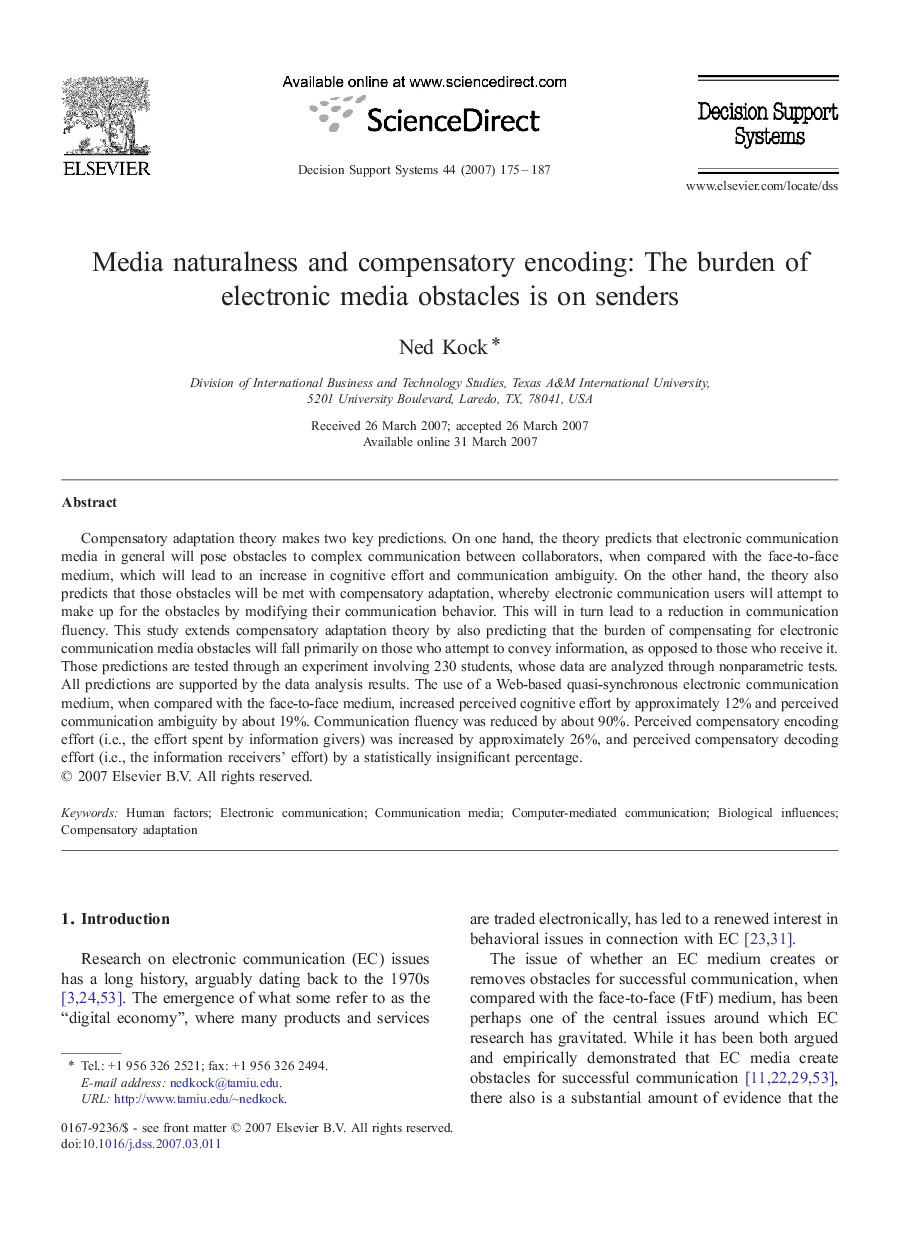| کد مقاله | کد نشریه | سال انتشار | مقاله انگلیسی | نسخه تمام متن |
|---|---|---|---|---|
| 552902 | 873296 | 2007 | 13 صفحه PDF | دانلود رایگان |

Compensatory adaptation theory makes two key predictions. On one hand, the theory predicts that electronic communication media in general will pose obstacles to complex communication between collaborators, when compared with the face-to-face medium, which will lead to an increase in cognitive effort and communication ambiguity. On the other hand, the theory also predicts that those obstacles will be met with compensatory adaptation, whereby electronic communication users will attempt to make up for the obstacles by modifying their communication behavior. This will in turn lead to a reduction in communication fluency. This study extends compensatory adaptation theory by also predicting that the burden of compensating for electronic communication media obstacles will fall primarily on those who attempt to convey information, as opposed to those who receive it. Those predictions are tested through an experiment involving 230 students, whose data are analyzed through nonparametric tests. All predictions are supported by the data analysis results. The use of a Web-based quasi-synchronous electronic communication medium, when compared with the face-to-face medium, increased perceived cognitive effort by approximately 12% and perceived communication ambiguity by about 19%. Communication fluency was reduced by about 90%. Perceived compensatory encoding effort (i.e., the effort spent by information givers) was increased by approximately 26%, and perceived compensatory decoding effort (i.e., the information receivers' effort) by a statistically insignificant percentage.
Journal: Decision Support Systems - Volume 44, Issue 1, November 2007, Pages 175–187